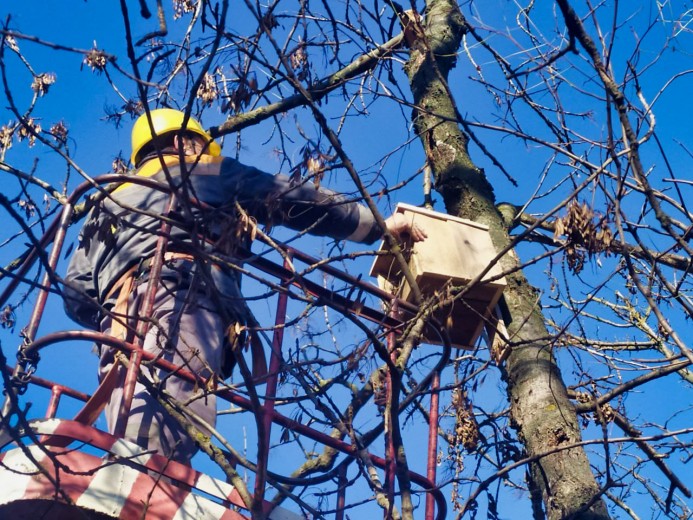Conservation of rare bird species: DTEK Dnipro Grids to install 20 nests for long-eared owls
DTEK Dnipro Grids is installing artificial nests for long-eared owls in the Dnipropetrovsk region. This way the company helps to preserve the population of these rare birds listed in the Berne Convention. The number of long-eared owls is declining in Ukraine because there are insufficient number of nesting sites to breed the chicks.

Long-eared owls live in forests next to open spaces where they love to hunt. They do not build their own nests, but take the old nests of other birds, mainly magpies and crows. However, there are fewer and fewer of corvid nests, so their number has declined. DTEK Dnipro Grids makes and installs artificial nests on trees in the efforts to preserve their population. These are special boxes that imitate the hollow of a tree. Birds can settle there and breed new offspring.
“DTEK is transforming the business in accordance with the New 2030 Strategy, based on ESG principles, values and responsibility for progress in achieving the sustainable development goals of the UN Global Compact. Birds of prey are especially vulnerable to human impact. To protect rare species from extinction, we install artificial nesting sites. So last year, we handed over 9 nesting sites for scops owls to the Dnieper-Orel nature reserve. This year we will install 20 more nests for long-eared owls,” says Andrii Tereshchuk, Head of DTEK Dnipro Grids.
DTEK Dnipro Grids makes artificial nests with their own hands and use a tower to hang them at the most convenient height for owls - 5-7 meters. The company coordinates the new nesting sites with ornithologists.
“We determine locations to install owl nest based on the actual need. First of all, these are forest lines between Kryvyi Rih and Sofiyivka near the Krasnoe, Novopolye settlements, the Yuzhnoye reservoir and others. Here owls stay for winters, and such apartments will be very useful to them,” says Vitaliy Vetrov, an ornithologist and expert at the Ukrainian Center for the Study of Birds of Prey.
In total, the DTEK Grids operating holding will install more than 100 nesting sites for birds of prey: the Red Book scops owl, as well as the long-eared owl and the falcon-fawn included in the Berne Convention. They are installed in four regions: Dnipropetrovsk, Donetsk, Odesa, and Kyiv.
In addition, the energy workers pursue the #EnergyWings environmental educational project, within which stork nests on utility poles are moved to safe platforms. They also install bird protection devices on the lines to protect birds from electric shock.

